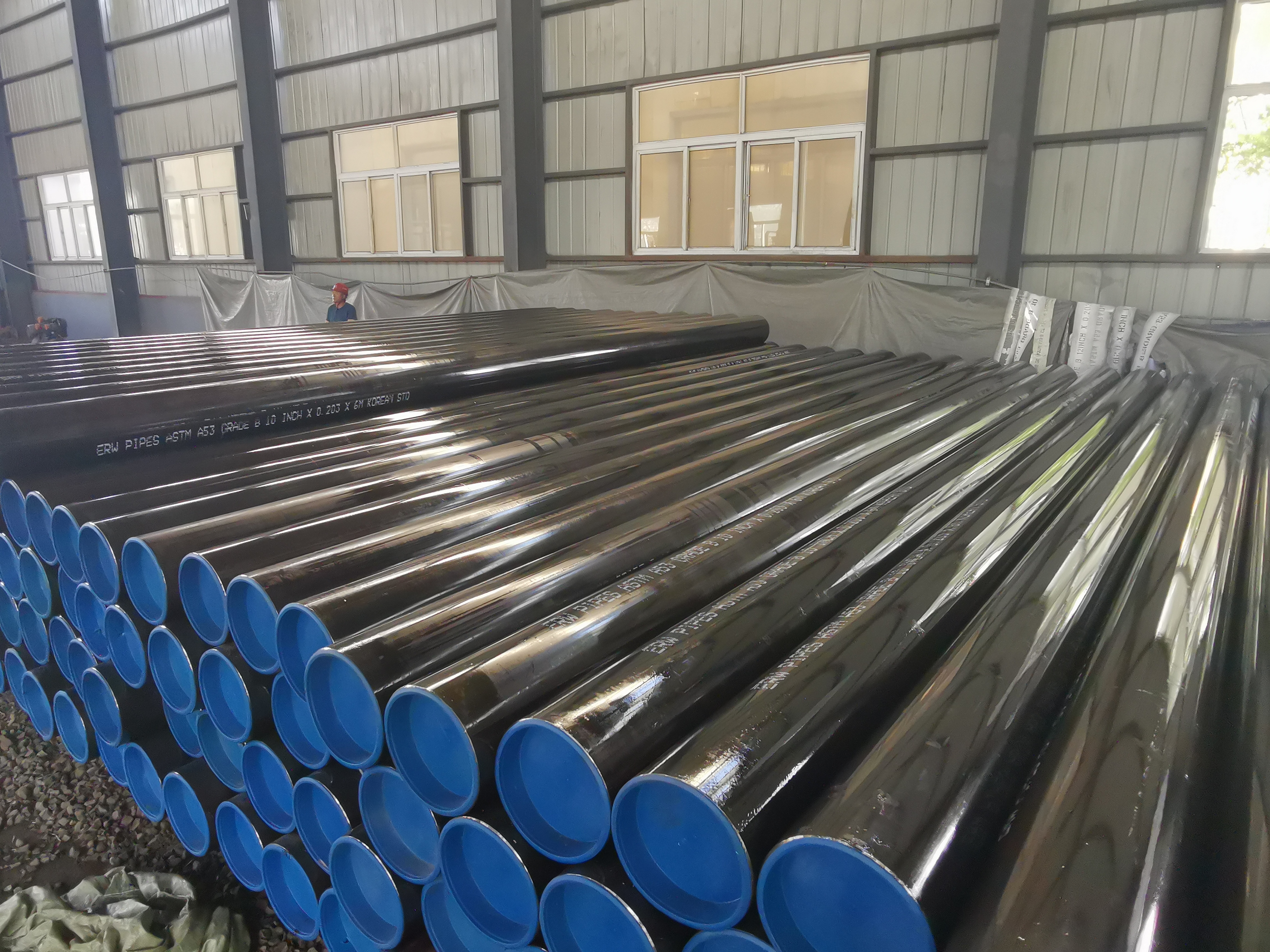The small and medium diameter ERW pipe mainly adopts the continuous roll forming method, and also adopts the row roll forming method
1. Continuous roll forming method. Continuous radial forming is to continuously plastically bend the tube billet on a multi-stand rolling mill with a certain roll pass to form a tube.
The forming machine is generally composed of 6~10 two-roller horizontal frames. Passive guide vertical rollers are installed between each horizontal frame, and its function is to prevent the tube billet from moving in series, make it guide correctly and prevent the strip steel from springing back. The number of horizontal frames depends on the steel pipe specification. There are two types of horizontal racks: cantilever type and fulcrum type. Small-diameter or thin-walled pipes can adopt the cantilever type, which is easy to replace and light, and the larger-diameter pipes can adopt the double-pivot type with high rigidity.

2. Roller cold bending forming method is a new forming technology developed on the basis of medium-sized straight seam electric welded pipe forming process in recent years. When forming large-diameter (400mm) thin-walled tubes on a continuous roll forming machine, the biggest problem is edge elongation on both sides of the tube.”It is easy to produce wrinkles, which will cause unstable molding and difficult welding. Therefore, it is necessary to try to prevent wrinkles in the pass design.
In order to prevent the edge from wrinkling, one is to control the edge extension. The second is to absorb the extended edge-compressive strain between the rolls. The characteristic of the row-column (CF) forming method is that a group of rolls is arranged outside the edge along the axial direction of the tube blank to control the edge extension. At the same time, the roll group is wrapped around the edge of the tube blank from the outside, and the edge extension is absorbed as a form of compression deformation, so this is a forming method that can prevent the edge "extension" and absorb the edge "extension".
1. Continuous roll forming method. Continuous radial forming is to continuously plastically bend the tube billet on a multi-stand rolling mill with a certain roll pass to form a tube.
The forming machine is generally composed of 6~10 two-roller horizontal frames. Passive guide vertical rollers are installed between each horizontal frame, and its function is to prevent the tube billet from moving in series, make it guide correctly and prevent the strip steel from springing back. The number of horizontal frames depends on the steel pipe specification. There are two types of horizontal racks: cantilever type and fulcrum type. Small-diameter or thin-walled pipes can adopt the cantilever type, which is easy to replace and light, and the larger-diameter pipes can adopt the double-pivot type with high rigidity.

2. Roller cold bending forming method is a new forming technology developed on the basis of medium-sized straight seam electric welded pipe forming process in recent years. When forming large-diameter (400mm) thin-walled tubes on a continuous roll forming machine, the biggest problem is edge elongation on both sides of the tube.”It is easy to produce wrinkles, which will cause unstable molding and difficult welding. Therefore, it is necessary to try to prevent wrinkles in the pass design.
In order to prevent the edge from wrinkling, one is to control the edge extension. The second is to absorb the extended edge-compressive strain between the rolls. The characteristic of the row-column (CF) forming method is that a group of rolls is arranged outside the edge along the axial direction of the tube blank to control the edge extension. At the same time, the roll group is wrapped around the edge of the tube blank from the outside, and the edge extension is absorbed as a form of compression deformation, so this is a forming method that can prevent the edge "extension" and absorb the edge "extension".









